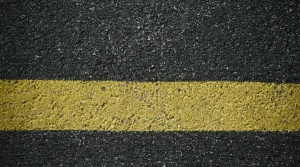Key Takeaways:
- Proper application of ice melt is crucial to preventing driveway damage and ensuring safety.
- Choose environmentally friendly products such as calcium magnesium acetate (CMA) or potassium chloride.
- Apply ice melt before a snowstorm for better effectiveness.
- Avoid overuse to prevent runoff that can harm vegetation and driveways.
- Use alternatives like sand or kitty litter for traction without environmental damage.
Using Ice Melt Without Harming the Environment
Winter brings icy conditions that pose hazards to driveways, walkways, and overall safety. While ice melt is a practical solution, it’s crucial to use it correctly to prevent damage to surfaces and the environment. In this guide, we’ll explore the best ways to use ice melt responsibly while maintaining safety and sustainability.
What is the Most Effective Way to Use Ice Melt?
1. Even Distribution for Comprehensive Coverage
Ensuring an even spread of ice melt is essential for maximum effectiveness. Using a spreader for large areas ensures uniform coverage, reducing the risk of icy patches and potential slip hazards.
2. Timely Application for Proactive Ice Prevention
Applying ice melt before a snowfall or immediately after ice forms creates a protective layer, preventing ice buildup. This proactive approach makes subsequent snow removal easier and more effective.
3. Follow Dosage Guidelines to Avoid Over-Application
Overusing ice melt can cause excessive runoff, harming driveways, vegetation, and the surrounding environment. Adhering to manufacturer instructions ensures efficiency while minimizing negative effects.
4. Consider Surface Type and Temperature
Different surfaces react differently to ice melt. For concrete driveways, use products designed for concrete safety. Check the product’s temperature range, as some ice melts may be ineffective in extreme cold.
5. Pre-Treatment for Enhanced Effectiveness
Applying ice melt before a snowstorm helps prevent snow and ice from bonding to surfaces, making removal easier and reducing the need for excessive chemical use.
6. Address High-Traffic Areas Strategically
Focus on areas with heavy foot traffic, such as walkways and entrances, to enhance safety while conserving resources. This targeted approach optimizes ice melt usage.
7. Reapplication During Prolonged Cold Spells
Extended freezing temperatures may reduce the effectiveness of ice melt. Regularly check surfaces and reapply when necessary to maintain a safe, ice-free environment.
What Ice Melt Won’t Damage Driveways?
Selecting the right ice melt can prevent damage to concrete and asphalt. Products containing calcium magnesium acetate (CMA) or potassium chloride are less corrosive and environmentally friendly alternatives to traditional salt-based solutions.
How Do You Get Rid of Ice on the Driveway?
Applying ice melt simplifies winter maintenance in several ways:
- Easier snow removal – Ice melt reduces manual labor required for shoveling.
- Prevention of accidents – A well-maintained, ice-free driveway reduces slip hazards.
- Community safety – Keeping driveways clear enhances neighborhood well-being.
- Legal protection – Preventing ice-related falls reduces liability risks.
How Do You Melt Ice on Concrete Without Harming the Driveway?
Concrete driveways require careful handling to avoid damage. Follow these steps for safe ice melting:
1. Sweep First: Clear Snow and Debris
Remove snow and debris before applying ice melt for optimal contact and efficiency.
2. Use a Plastic Shovel: Prevent Scratches
Avoid metal shovels that can scratch concrete. A plastic shovel is a safer alternative.
3. Apply Evenly: Focus on High-Traffic Areas
Evenly distribute ice melt across the surface, prioritizing frequently used areas.
4. Choose Calcium Magnesium Acetate (CMA) Products
CMA-based ice melts are less corrosive and safer for concrete than traditional rock salt.
5. Address Persistent Ice Carefully
For stubborn ice patches, allow the ice melt to work before gently breaking up the ice with a plastic shovel.
6. Monitor and Reapply as Needed
During prolonged cold spells, check the driveway periodically and reapply ice melt if necessary.
7. Post-Application Cleanup
Sweep away excess ice melt residue to prevent buildup and potential environmental harm.
How Do You Melt Ice on the Driveway Without Salt?
For those seeking alternatives to traditional salt-based ice melts, consider:
- Sand – Provides traction without melting ice.
- Kitty Litter – Improves grip on slippery surfaces.
- Beet Juice Mixture – Helps prevent ice formation and is environmentally friendly.
- Heated Mats – Electric heating mats can be placed on driveways for continuous ice prevention.
How to Deice Driveways Safely?
1. Use the Proper Dosage
Stick to recommended amounts to prevent damage and unnecessary environmental impact.
2. Remove Melted Ice Promptly
Clearing away melted ice prevents refreezing, reducing the risk of additional hazards.
3. Perform Post-Application Cleanup
Sweeping away excess ice melt prevents harmful residue from accumulating on driveways and landscapes.
FAQ: Ice Melt and Driveway Safety
Q: Can ice melt damage concrete driveways?
A: Yes, certain ice melts containing sodium chloride or calcium chloride can cause surface damage. Opt for CMA-based products for safer use.
Q: How often should I apply ice melt?
A: Apply before a snowstorm or as soon as ice forms. Reapply as needed during prolonged cold spells.
Q: Is ice melt safe for pets?
A: Some ice melts contain chemicals that can harm pets. Look for pet-safe options labeled as non-toxic and non-irritating.
Q: Can I use vinegar to melt ice?
A: While vinegar can help break down ice, it’s not as effective as dedicated ice melt products and may not work in extremely low temperatures.
Q: How can I prevent ice buildup without chemicals?
A: Use physical methods like shoveling, heated mats, or applying sand for traction.
By following these best practices, you can effectively use ice melt without harming your driveway or the environment. Prioritizing safety, sustainability, and proper application ensures a clear and damage-free driveway all winter long Upgrade Your Pavement Today – Contact Paving Hackensack Company for a Free Estimate!.







